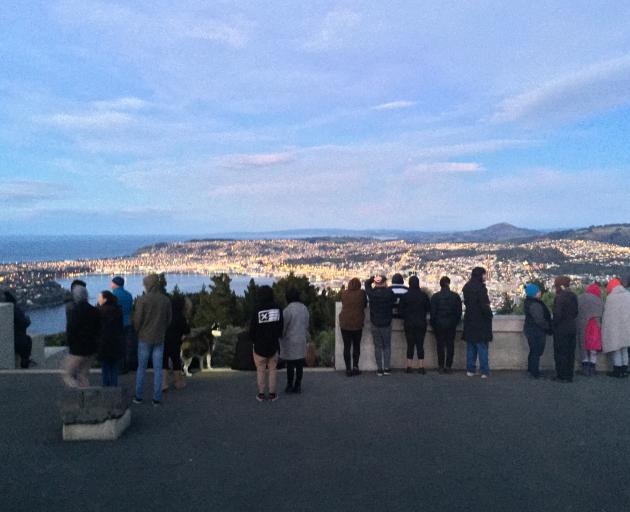Early morning star-gazers in Dunedin were rewarded with a once-in-a-lifetime glimpse at a "blood moon" like no other.
People throughout the country - weather permitting - were able to view a rare celestial event called a selenelion.
This occurs when an eclipsed moon can be seen on one horizon, while the rising sun can be observed on the other.

In Dunedin, hundreds of people gathered at Signal Hill lookout hoping to catch a glimpse of the full lunar eclipse. Others also went to Highcliff Memorial for another vantage point.
Otago and Southland were some of the best places to see the event as it lasted longer.
In Invercargill, there was five minutes between sunrise at 8.12am and moonset shortly after, with the moon entirely within Earth's shadow.
In Dunedin, the interval was reduced to four minutes; in Christchurch, three minutes.

Red light had a better chance of doing so for the same reason the sky was blue - shorter wavelengths were scattered more efficiently by the molecules in our atmosphere, he said.
“Although there is a lunar eclipse visible from New Zealand every couple of years, on average, being located in the right place to see a celestial peculiarity like a selenelion is much less frequent, and very few people have witnessed one.”
The first record of any such event dated from 1666 - the same year of the Great Fire of London.
- NZ Herald and ODT online


























